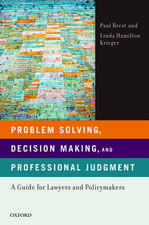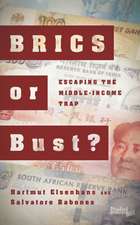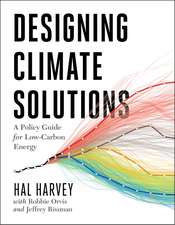Money Well Spent
Autor Paul Brest, Hal Harveyen Limba Engleză Hardback – 31 iul 2018
Preț: 257.13 lei
Nou
Puncte Express: 386
Preț estimativ în valută:
49.22€ • 53.48$ • 41.37£
49.22€ • 53.48$ • 41.37£
Carte disponibilă
Livrare economică 31 martie-14 aprilie
Preluare comenzi: 021 569.72.76
Specificații
ISBN-13: 9781503602618
ISBN-10: 1503602613
Pagini: 392
Dimensiuni: 161 x 236 x 38 mm
Greutate: 0.68 kg
Ediția:2nd edition
Editura: Stanford University Press
ISBN-10: 1503602613
Pagini: 392
Dimensiuni: 161 x 236 x 38 mm
Greutate: 0.68 kg
Ediția:2nd edition
Editura: Stanford University Press
Cuprins
Contents and Abstracts
Introduction
chapter abstract
The Introduction describes developments since the first edition.1The Promise of Strategic Philanthropy
chapter abstract
The chapter introduces the framework for strategic philanthropy and provides guidance for philanthropists' determination of their interests and objectives. It provides five brief case studies of philanthropic successes and failures.2Problem Analysis
chapter abstract
This chapter includes defining the problem the philanthropist is trying to solve, identifying intended beneficiaries, and understanding the causes of the problem.3Developing Solutions
chapter abstract
Having defined the problem, the authors now consider developing possible solutions. The chosen solution is embodied in a theory of change, or logic model, which describes the activities necessary to achieve the desired outcome. To be successful, a strategy must be grounded in evidence that each step will lead to the next, and ultimately to the desired outcome.4From Theory to Action
chapter abstract
Designing a strategy is only the start. This chapter examines the challenges in implementing the strategychallenges sometimes created by the beneficiaries themselves, sometimes by other stakeholders, and sometimes by the external environment. The authors discuss how to identify and address implementation problems.5Evaluating the Impact of Your Philanthropy
chapter abstract
To characterize a strategy as "evidence-based" means that there is good reason to believe that it has impactthat it makes a difference compared to what would have occurred had the strategy not been implemented (the "counterfactual"). This chapter describes techniques for evaluating the impact of a program. It also considers the problem of generalizability, or external validitypredicting whether a strategy that worked in one time and place will work in others.6Using Outcome Data to Increase Your Impact
chapter abstract
This chapter examines the use of cost-benefit analysis (CBA), which compares the total costs of a program with the benefits it produces, in several contexts: charity evaluation services; a foundation's internal decision making; pay-for-success, or result-based finance, programs, in which an organization is paid for achieving agreed-upon outcomes; and a foundation's consideration of strategies that have a low probability of success.7Preparing to Open for Business
chapter abstract
Chapter 7 begins with framework to assist donors in choosing approaches that fit their needs and values in solving social problems and determining a focus for their philanthropy.8Inviting Proposals and Conducting Due Diligence
chapter abstract
The chapter focuses on funders' communications and other interactions with potential grantees, beginning with the funder's making its goals and strategies known in advance, and continuing with inviting letters of inquiry and undertaking due diligence, key aspects of which are reviewing applicants' theories of change and proposed action plans. The chapter also discusses the importance of listening, not only to grantees, but to the voices of one's intended beneficiaries.9Forms of Philanthropic Engagement and Funding
chapter abstract
Philanthropists can be more or less active in their engagement with grantees, and can fund grants on a spectrum that runs from providing unrestricted general operating support to an organization, to funding specific projects. This chapter proposes criteria for determining the form of support, and argues for a strong presumption favoring general operating support when the funder's interests and the organization's activities are well aligned. The chapter also argues that funders should pay full indirect costs.10Impact Investing and Mission Investments
chapter abstract
This chapter explores the realm of socially motivated financial investments, or so-called impact investments, which involve placing capital in enterprises that generate social or environmental goods, services, or ancillary benefits, with the goal of creating beneficial social outcomes. The investors expect financial returns ranging from the highly concessionary to market rate or even above market. For an impact investment to have impact requires that the investee enterprise have impact, along the lines examined in Chapter 5, and also that the investment increases or improves the investee's socially valuable outputs or practices, that is: the investment has "additionality," or create social value. We consider these issues from the perspective of an individual investor as well as that of a foundation making program related investment (PRIs), mission related investment (MRIs), or socially responsible investment (SRIs).11Working With Others in the Field
chapter abstract
Philanthropists work with many others-including grantee organizations, governments, businesses and other philanthropists-and, crucially, with the people their programs are intended to help. The chapter considers methods of co-funding and collaborating with other philanthropists, developing and disseminating knowledge, and supporting the field of philanthropy.12Principles and Practices of Effective Philanthropy
chapter abstract
The chapter considers philanthropists' roles in supporting the development and dissemination of two fundamentally different forms of knowledge: knowledge that is basic, theoretical, and has no immediate consequence but to satisfy people's eternal curiosity; and practical knowledge that has foreseeable useful applications. With respect to the second, it examines the process of creating knowledge. The chapter also examines the use of prizes to induce and recognize innovation, and the role of philanthropy in building fields.13Promoting Knowledge
chapter abstract
The chapter has three major parts, the first two of which consider related ways to improve individuals' welfare: influencing their behavior and providing goods and services. The third part examines philanthropists' support of service-delivery organizations from the start-up phase through so-called "venture philanthropy," to maturity.14Improving Individual Lives
chapter abstract
The chapter focuses on efforts to change public policy and business practices, and ends with a section on social movements, including case studies of the advocacy leading to the enactment of the Affordable Care Act ("Obamacare"), of political activism in two states, of the movement for cage-free eggs, and of conservative and progressive social movements. The chapter includes pointers on advocacy.15Influencing Policy Makers and Businesses
chapter abstract
This chapter considers the features of various organizational structures-from writing checks at your kitchen table to establishing a foundation staffed with program officers- for undertaking philanthropy, with the goal of contributing to your social impact while meeting other personal and financial needs. It considers four major structures: one's checkbook, limited liability companies (LLCs), donor advised funds (DAFs), and foundations.16Structures for Philanthropy
chapter abstract
This chapter examines the considerations that would guide a philanthropist in deciding whether to preserve his or her philanthropic assets for the future or spend them sooner. These include the needs of the present versus those of the future, the growth rate of one's financial assets versus the escalation of the problem one seeks to address, and how much trust one has in future generationsAfterword: The Responsibilities of Strategic Philanthropy
chapter abstract
A brief afterword argues that the extraordinary freedom enjoyed by philanthropists comes with certain responsibilities. Without shying away from seeking major social change, philanthropists should undertake their work with appreciation of its empirical uncertainties and complexities, with mindfulness of the potential for collateral damage, and with respect for those on the other side of the issue.17Principal and Principle: Foundation Spending Policies
chapter abstract
This chapter examines the considerations that would guide a philanthropist in deciding whether to preserve his or her philanthropic assets for the future or spend them sooner. These include the needs of the present versus those of the future, the growth rate of one's financial assets versus the escalation of the problem one seeks to address, and how much trust one has in future generationsNotă biografică
Paul Brest is former Dean and Professor Emeritus at Stanford Law School, a Lecturer at the Stanford Graduate School of Business, Co-Director of the Stanford Center on Philanthropy and Civil Society, and Co-Director of the Stanford Law and Policy Lab. He was President of the William and Flora Hewlett Foundation from 2000-2012. Hal Harvey is the CEO of Energy Innovation, a San Francisco-based energy and environmental policy firm. Previously, he was founder and CEO of ClimateWorks Foundation, a network of foundations that promote polices to reduce the threat of climate change; Environment Program Director at the William and Flora Hewlett Foundation; and founder and President of the Energy Foundation, a philanthropy supporting policy solutions that advance renewable energy and energy efficiency. He has also set up foundations in China, Europe, and India.
Descriere
This award-winning book draws on examples from hundreds of foundations and non-profits to explain how to create and carry out strategies that deliver meaningful results. In this new edition, Paul Brest and Hal Harvey articulate the components of a "smart strategy" to guide the social sector as this book has done for the last decade.
















